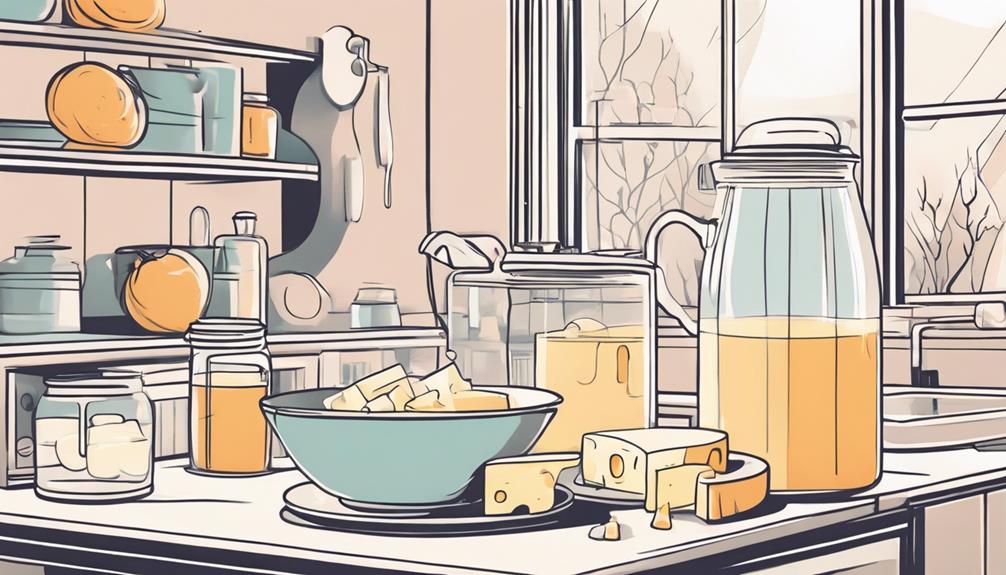How To Become More Self-Sufficient Without Starting a Full-Blown Farm…
Want to start preserving your harvest, making your own soap, or building a backyard root cellar — but not sure where to begin? “Homesteading Advice” gives you instant lifetime access to 35+ practical homesteading books on food preservation, veggie gardening, DIY natural cleaning products (save over $250 per year with this skill alone), brewing, off-grid energy, and a whole lot more…
Click Here To Check It Out Now!
“I’ve been experimenting with different types of cheese but can’t seem to get consistent results with coagulation. I suspect it might have something to do with the pH levels of the milk I’m using. How does the pH of the milk affect coagulation, and what can I do to ensure better results?” Thanks, Patricia, Portland, USA.
How Does The Ph Of The Milk Affect Coagulation?
Patricia, you’re absolutely right to suspect that the pH of your milk might be affecting your cheese-making results. Understanding how pH influences milk coagulation will definitely help you fine-tune your process and achieve more consistent outcomes. Let’s break this down step-by-step to make it easier to grasp and apply in your next cheese-making session.
Understanding Coagulation
Coagulation is the process where milk changes from a liquid to a gel-like substance. This step is fundamental in cheese making, serving as the foundation for giving the cheese its structure. Two primary methods facilitate this transformation:
- Addition of rennet: An enzyme known as chymosin works on milk proteins, causing them to form a gel.
- Acid-induced coagulation: Adding an acidic substance such as lemon juice or vinegar lowers the pH of milk, leading it to curdle.
The Role of pH in Coagulation
The pH level of milk is a measure of its acidity or alkalinity. Milk typically has a pH around 6.7, which is slightly acidic. The process of coagulation is highly sensitive to pH levels because they affect the stability of casein micelles—the protein structures in milk. Here’s how:
- Low pH (more acidic): When the pH is reduced, casein micelles lose their negative charge, causing them to come together and form a gel. Ideal for cheese varieties like mozzarella and paneer.
- High pH (more alkaline): Higher pH levels result in less effective coagulation. This could lead to a longer coagulation time or insufficient curd formation.
In essence, the right acidic environment facilitates the breaking of bonds within the milk proteins, making them more prone to clotting and forming a stable curd. Patricia, tuning the pH of the milk is crucial for achieving the desired consistency and texture in your cheese.
Measuring pH Levels
To ensure the pH level of your milk is within the ideal range for coagulation, it’s vital to have accurate measuring tools. Here are some methods:
- pH Meter: Digital pH meters are highly accurate and can quickly provide precise readings. Calibrate it before use according to the manufacturer’s instructions.
- pH Strips: Though less precise, they offer a quick way to measure pH. Ensure they are suitable for the range you’re working with.
- Indicator Solutions: Drops that change color depending on the acidity can also work, although they’re less common in home cheese making.
Accurate measurements make it easier to adjust the pH as needed, so investing in a reliable pH meter could be particularly useful.
Adjusting pH Levels
If your milk’s pH is not within the ideal range, here are methods to adjust it:
Lowering pH (Increasing Acidity)
- Add cultures: Certain bacterial cultures naturally produce lactic acid, lowering the pH over time.
- Direct acidification: Adding vinegar, lemon juice, or diluted citric acid can quickly decrease the pH.
Raising pH (Decreasing Acidity)
- Add buffering agents: Ingredients like sodium bicarbonate can raise pH, but use them cautiously as they can impact taste.
- Milk blending: Mixing more acidic milk with fresh milk can help balance the pH levels.
Keep in mind that frequent pH adjustments require precision. It’s often better to control pH through the selection and management of starter cultures.
Starter Cultures and Their Impact
Starter cultures are strains of bacteria that help ferment the milk, producing lactic acid and lowering the pH level. These cultures are essential for various cheese types:
- Mesophilic cultures: Work best at moderate temperatures (20-30°C) and are used in cheeses like Cheddar and Gouda.
- Thermophilic cultures: Thrive at higher temperatures (30-45°C) and are used in cheeses like Swiss and Parmesan.
Choose the appropriate culture depending on the type of cheese you’re making, as they directly influence the pH and, consequently, the coagulation.
Practical Tips for Consistent Results
Here are some practical tips to help you achieve consistent coagulation results:
- Start with Quality Milk: Use fresh, high-quality milk. Low-quality milk can have variable pH levels affecting the consistency.
- Monitor pH Closely: Keep track of the pH levels throughout the cheese-making process, especially before adding rennet or cultures.
- Temperature Control: Maintain the correct temperatures when heating milk and during incubation. Temperature and pH are interconnected.
- Follow Recipes Precisely: Stick to tried-and-tested recipes initially before making experimental adjustments.
These steps will help you create a stable environment for the milk proteins to coagulate effectively, leading to better cheese consistency.
Final Thoughts…
Patricia, thank you for your insightful question. The pH level of milk plays a vital role in the coagulation process and understanding its nuances can greatly improve your cheese-making results. From measuring and adjusting pH to using the right starter cultures, each step contributes to creating the perfect curd. Keep experimenting, and don’t hesitate to fine-tune the process to match the cheese you’re aiming to create. Happy cheese making!

